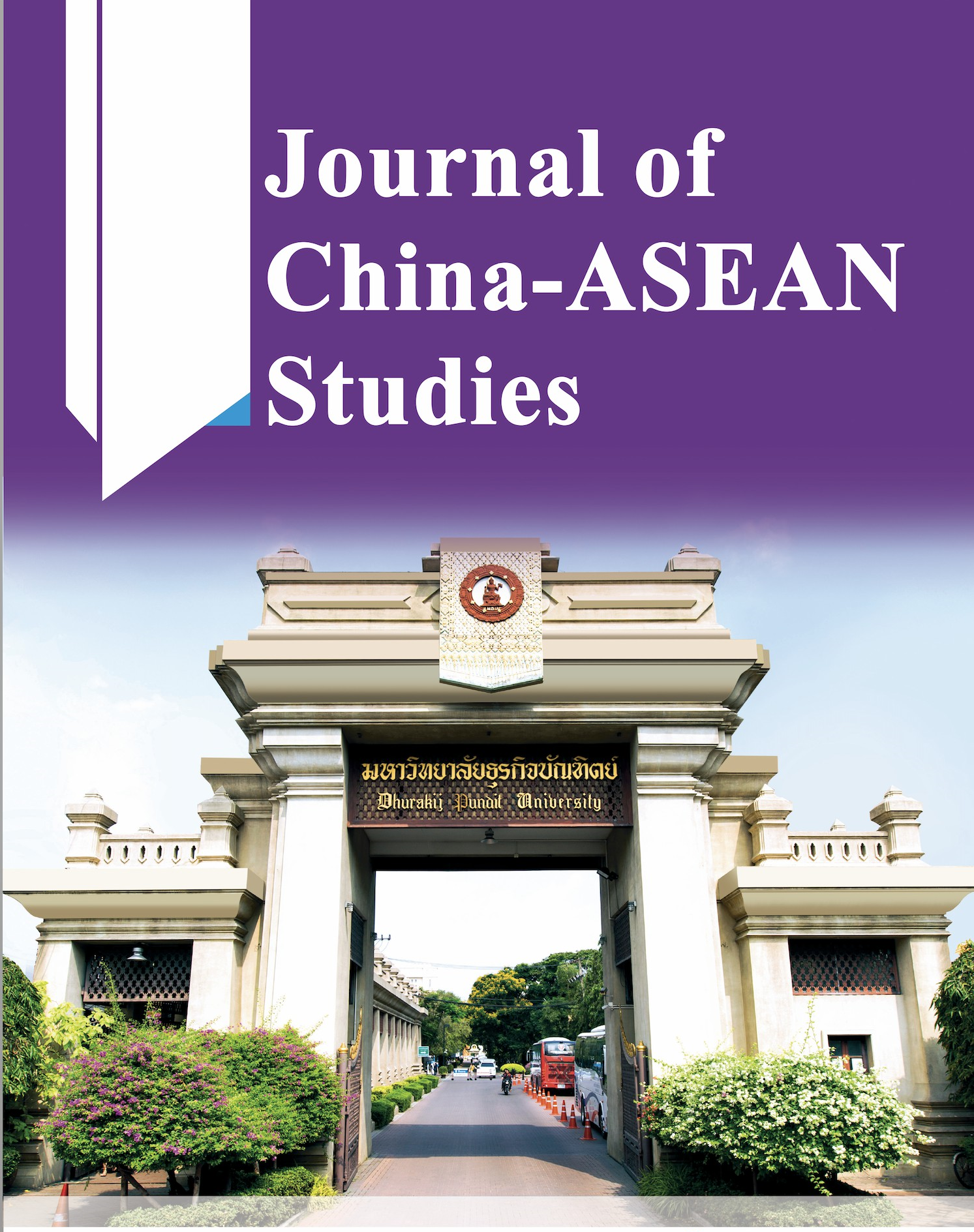Undertaking Online Collocation Dictionary to Enhance Textual Translation Ability: An Experimental Study of Mainland Chinese EFL Learners
Keywords:
Online Collocation Dictionary, Collocation Knowledge, Textual Translation AbilityAbstract
Collocation competence, if incontestably stated, poses a significant influence on ESL/EFL
students’ writing performance alongside mutual communication effectively. Even so, very
limited attempt was made to clarify the relationship between learners’ collocation competence
and textual translation ability. The objectives of current paper were to: 1) examine Chinese EFL
university learners’ collocation knowledge and their textual translation ability before and
following the treatment of collocation-based instruction; 2) observe the correlation between
Chinese EFL university learners’ collocation knowledge and their textual translation ability;
and 3) to explore on effects of instruction adopting online English collocation dictionary on
Chinese university learners’ textual translation ability. This study in terms of research design
was quantitatively conducted along with an experimental and control group being compared.
The control group (N=38) received a generally-traditional vocabulary instruction while the
experimental group (N=37) was conducted with the use of an online collocation dictionary as
intervention. Results suggested: 1) a significant improvement was found in collocation
knowledge and textual translation ability after the treatment; 2) collocation knowledge and
textual translation ability were found significantly and positively correlated. The research
outcomes substantially provided evidences of the relationship between collocation competence
and textual translation ability. With this in mind, it can benefit EFL teaching by offering writing
teachers with practical guidance on how collocation knowledge enables to serve as an optimal
solution to EFL learners’ problem with textual translation production.
References
Aitchison, J. (2002). Words in The Mind. Blackwell.
Al-Zahrani, M. S. (1998). Knowledge of English lexical collocations among male Saudi college students majoring in English at a Saudi university. [Doctoral dissertation, Indiana University of Pennsylvania], Pennsylvania. https://www.ssoar.info/ ssoar/bitstream/handle/document/56765/ssoar-ilshs-2015-61-see_et_al–The knowledge_of_lexical_collocation.pdf?sequence=1
Creswell, J. W., Plano Clark,V., Gutmann,M., &Hanson,W. (2010). Advanced mixed methods research designs. In A. Tashakkori,&C. Teddlie (Eds.), Handbook on Mixed Methods in The Behavioral and Social Sciences(pp.209-40). Sage.
Ellis, N.C.,&Laporte, N. (1997) ‘Contexts of acquisition: effects of formal instruction and naturalistic exposure on second language acquisition. A Review of The Research. SSLA24: 223–236. https://doi.org/10.1017/S027226310505014X
Ellis, N. C., Ute Römer.,& O’Donnell, M.B. (2016). Usage-Based Approaches to Language Acquisition and Processing: Cognitive and Corpus Investigations of Construction Grammar.Wiley-Blackwell
Ghazali, F.A. (2015). Reinforcing students’collocational competence in EFL classrooms. MJAL, 7(3), 1-18.
Godwin-Jones, R. (2018). Second language writing online: An update. Language Learning &Technology, 22(1), 1-15. https:// scholarspace. manoa.hawaii.edu/bitstream/10125/44574/1/22_01_godwin-jones.pdf
Hill, J. (2010). Revising priorities: from grammatical failure to collocational success. In Lewis, M. (Ed.). Teaching Collocation, 47-69. Oxford Press
Hill, J., Lewis, M., & Lewis, M. (2000). Classroom strategies, activities and exercises. In M. Lewis (Ed.), Teaching Collocation: Further Developme nts in The Lexical Approach(pp. 88-117). Language Teaching Publications.
Kang, E., & Han, Z. (2015). The efficacy of written corrective feedback in improving L2 written accuracy: A meta-analysis. The Modern Language Journal, 99(1), 1-18. https://onlinelibrary.wiley.com/doi/full/10.1111/modl.12189
Lewis, M. (2000). Teaching Collocation: Further Development in The Lexical Approach. Language Teaching Publications.
Liao, B. S. (2016). A Study of the Relationship between College Students’ Translation Learning Styles and Their Translation Competence. FIT 6th Asian Translator’s Forum, Macao.
Lin, Y. C. (2016). A Collocational Approach to Teaching Taiwanese College Low-Achieving Learners in an EFL Writing Classroom. [Doctoral Dissertation, Tankang University]. https://www.tandfonline.com/doi/full/10.1080/2331186X.2016.1184826
Luo, Q.Q. (2016). The Effects of Data-Driven Learning Activities on EFL Learners’ Writing Development. Luo SpringerPlus.
Meechai, D.,& Chumworathayee, T. (2015). Verb-Noun collocational competence of Thai university EFL students: acomparative study of a regular program and an English program. Language Education and Acquisition Research Network (LEARN) Journal, 8(2), 145-160. https:// so04.tci-thaijo.org /index.php /LEARN/ article/ view/102678
Men, H. (2018). Vocabulary Increase and Collocation Learning: A Corpus-Based Cross-Sectional Study of Chinese Learners of English. Springer.
Nation, I.S. P. (2009). Teaching ESL/EFL Reading and Writing. Routledge.
Schmitt, N. (2000). Vocabulary in Language Teaching. Cambridge University Press.
Tekingul, B. (2013). Collocation teaching effect on reading comprehension in advanced EFL setting. Procedia-Social and Behavioral Sciences,70, 1078-1089.https://www.researchgate.net/publication/264746607_Collocation_Teaching_Effect_on_Reading_Comprehension_in_Advanced_EFL_Setting
Thongvitit, S.,& Thumawongsa, N. (2017). A corpus-based study of English collocations found in the abstracts of research articles written by Thai EFL writers. International Journal of Social Science and Humanity,7(12), 751-755. http://www.ijssh.org/vol7 /920-HS009.pdf
Waddington, C. (2010). Different methods of evaluating student translations: The question of validity. Meta: journal des traducteurs/Meta: Translators’Journal, 46(2), 311-325. https://www.semanticscholar.org/paper/ Different-Methods-of-Evaluating-Student-The-of-Waddington/864fc0445a9766ebec85074a0514d38bcfba7569
Woolard, G. (2000). Collocation-encouraging learner independence. In M. Lewis (ed.), Teaching Collocation: Further Developments in The Lexical Approach(pp. 28-46). Language Teaching Publications.
Yumanee, C., & Phoocharoensil, S. (2013). Analysis of collocational errors of Thai EFL students. Language Education and Acquisition Research Network. Journal, 1(1), 90-100.https://so04.tci-thaijo.org/index.php/LEARN/article/view/102723






